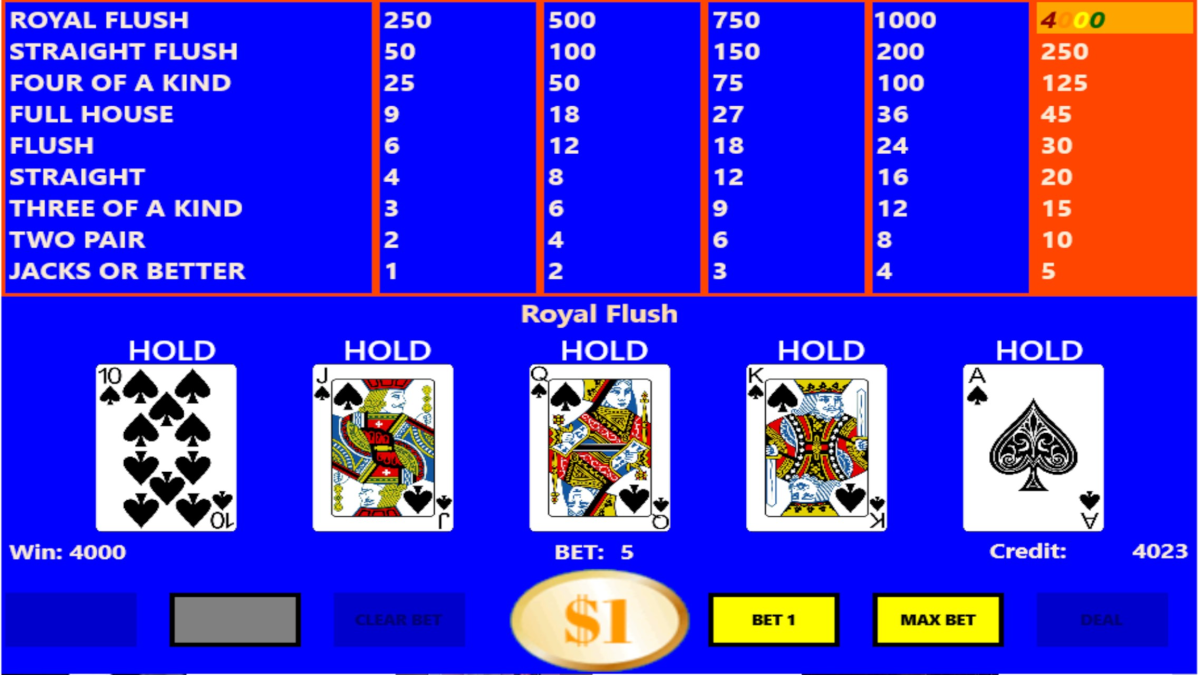Casino craps represents one of gaming’s most mathematically complex offerings, where a single roll of two dice can determine outcomes across dozens of simultaneous wagers. The game’s intricate betting structure creates a fascinating study in probability, revealing how mathematical principles can simultaneously offer players exceptional value and severe disadvantage—often within the same game session.
Understanding the mathematics behind craps illuminates broader principles about casino fairness, probability theory, and the crucial role player knowledge plays in determining long-term outcomes. This analysis examines every aspect of craps mathematics, from fundamental dice probability to advanced betting strategies.
What Are the Basic Probability Principles Behind Craps?
Craps mathematics begin with the fundamental probability of two standard six-sided dice. These create 36 possible combinations, producing sums from 2 to 12. However, these outcomes occur with dramatically different frequencies, forming the mathematical foundation for every bet on the craps table.
The number 7 can be achieved in six different ways (1+6, 2+5, 3+4, 4+3, 5+2, 6+1), making it the most probable outcome with odds of 6:30 or 1:5—a 16.67% probability on any given roll. This mathematical reality drives virtually every aspect of craps strategy and house advantage calculations.
In contrast, the numbers 2 and 12 each have only one possible combination (1+1 and 6+6 respectively), occurring with a mere 2.78% probability. The numbers 3 and 11 each have two combinations, whilst 4 and 10 have three combinations each. The middle numbers—6 and 8—each offer five combinations, making them relatively common outcomes.
This uneven distribution creates what mathematicians call a “normal distribution” or bell curve when graphed, with 7 at the peak and the extreme numbers (2 and 12) at the tails. Understanding this fundamental probability structure is essential for evaluating the mathematical fairness of different craps betting options.
How Do Pass Line and Don’t Pass Bets Work Mathematically?
The Pass Line bet forms the backbone of craps and offers one of the most mathematically sound wagers in casino gaming. Players win immediately if the come-out roll produces 7 or 11 (8 ways out of 36 possible outcomes), providing a 22.22% chance of instant victory.
Players lose immediately on 2, 3, or 12 (4 ways out of 36), representing an 11.11% probability of immediate loss. If any other number (4, 5, 6, 8, 9, or 10) appears, it becomes the “point,” and players must roll that number again before rolling a 7.
The mathematical complexity emerges in the point phase. If the point is 4, players have three ways to win (rolling 4) versus six ways to lose (rolling 7), creating 3:6 or 1:2 odds. For point 6 or 8, players have five ways to win against six ways to lose (5:6 odds). Point 5 or 9 offers four ways to win versus six ways to lose (4:6 or 2:3 odds).
Calculating the overall house edge requires combining immediate outcomes with point-phase probabilities. The complete mathematical analysis reveals a house edge of 1.364%, meaning players lose an average of £1.36 for every £100 wagered over the long term.
Don’t Pass betting essentially reverses this scenario, with players betting against the shooter. Don’t Pass wins on come-out rolls of 2 or 3, loses on 7 or 11, and “pushes” (ties) on 12. During the point phase, Don’t Pass players win when 7 appears before the point number.
The mathematics slightly favour Don’t Pass bettors, with a house edge of just 1.402%—marginally better than Pass Line betting. However, this advantage comes with social considerations, as Don’t Pass bettors root against the majority of players at the table.
What Makes the Odds Bet Unique in Casino Mathematics?
The Odds bet represents a mathematical anomaly in casino gaming: a wager with zero house edge. Placed behind Pass Line or Don’t Pass bets after a point is established, Odds bets pay true mathematical odds without any casino advantage.
For points 4 and 10, the true odds are 2:1 (six ways to roll 7 versus three ways to roll the point), and casinos pay exactly 2:1. Points 5 and 9 carry true odds of 3:2 (six ways to roll 7 versus four ways to roll the point), with casinos paying precisely 3:2. Points 6 and 8 have true odds of 6:5, and casinos pay exactly 6:5.
This mathematical fairness seems to contradict basic casino business principles—how can venues offer bets where they make no profit? The answer lies in marketing strategy and practical limitations. Odds bets can only be placed alongside Pass or Don’t Pass wagers (which do carry house edges), and most casinos limit Odds bets to specific multiples of the original wager.
Common Odds multipliers include 2x, 3x, 4x, 5x, or even 100x at some venues. A player making a £10 Pass Line bet at a 3x Odds table can wager up to £30 on Odds. The combined house edge of a Pass Line bet with maximum Odds drops significantly: from 1.364% on Pass Line alone to 0.374% when combined with 3x Odds.
The mathematical impact increases with higher Odds multiples. At 10x Odds, the combined house edge drops to just 0.184%. At theoretical infinite Odds, the combined house edge would approach zero—though no casino offers unlimited Odds betting for obvious economic reasons.
How Do Proposition Bets Compare Mathematically?
The centre of the craps table presents a stark mathematical contrast to Pass Line betting. Proposition bets offer exciting payouts but carry house edges that range from merely unfavourable to mathematically devastating.
Field bets appear deceptively attractive, covering seven numbers (2, 3, 4, 9, 10, 11, 12) out of eleven possible outcomes. However, mathematical analysis reveals the flaw: whilst Field bets win on 16 dice combinations, they lose on 20 combinations. Standard Field bet payouts (1:1 on most numbers, 2:1 on 2 and 12) create a house edge of 5.56%.
Some casinos offer enhanced Field betting, paying 3:1 on either 2 or 12. This adjustment reduces the house edge to 2.78%—still significantly worse than Pass Line betting but more reasonable than standard Field mathematics.
Hard Ways bets demonstrate how attractive payouts can mask poor mathematics. A Hard 8 bet (requiring exactly 4+4) wins on one combination out of 36 and loses on ten combinations (the five other ways to roll 8, plus six ways to roll 7). True odds are 10:1, but casinos typically pay either 9:1 or 10:1.
At 9:1 payouts, the house edge reaches 9.09%. Even at the more generous 10:1 payout, the house edge remains 7.69% due to the frequency of losing on 7s between Hard 8 occurrences. These mathematics make Hard Ways betting a poor long-term strategy despite the excitement of occasional large payouts.
Any 7 bets represent perhaps the worst mathematics on the craps table. With six ways to win out of 36 possible outcomes, true odds are 5:1. Casinos pay 4:1, creating a devastating 16.67% house edge. Players betting Any 7 lose an average of £16.67 for every £100 wagered—making this one of the worst bets in casino gaming.
Horn bets combine four proposition wagers (2, 3, 11, 12) into a single bet. The mathematics vary depending on which number hits, but the overall house edge typically ranges from 11% to 16%—consistently poor for players regardless of the specific outcome.
What Are the Mathematical Differences Between Craps Variations?
American Craps represents the standard version analysed above, with Pass Line house edges of 1.364% and comprehensive proposition betting options. This version appears in virtually all American casinos and many international venues.
Crapless Craps modifies the fundamental rules by eliminating come-out losses. Instead of losing on 2, 3, or 12, these numbers become points that must be rolled again before a 7. Whilst this sounds player-friendly, the mathematical reality proves otherwise.
In Crapless Craps, players can only win immediately on 7 or 11 (8 combinations) but face no immediate losses. However, the point numbers 2, 3, 11, and 12 are extremely difficult to repeat before rolling 7. The number 2 has only one way to win versus six ways to lose to 7 (1:6 odds), whilst 3 has two ways to win versus six ways to lose (1:3 odds).
These unfavourable point probabilities increase the overall house edge to 5.38%—nearly four times higher than standard craps. The mathematical lesson: seemingly player-friendly rule changes can actually worsen the odds significantly.
Bank Craps, common in European casinos, maintains similar basic mathematics but may feature different payout structures for proposition bets. Some versions include additional side wagers or modified Field bet payouts. The fundamental Pass Line mathematics remain essentially unchanged across most international variations.
Electronic and Online Craps should theoretically maintain identical mathematics through proper random number generation. However, players must trust that computer algorithms accurately replicate true dice probability. Regulatory testing and certification help ensure mathematical integrity, but some players prefer physical dice for psychological comfort.
Bubble Craps machines, which use physical dice in an enclosed chamber with automated betting, bridge the gap between electronic and traditional craps. The mathematics remain identical to table games, but betting limits and available options may differ.
How Do Betting Systems Affect Craps Mathematics?
Progressive betting systems attempt to overcome house edges through strategic bet sizing, but mathematical analysis reveals fundamental flaws in these approaches. The Martingale system—doubling bets after losses—faces the harsh reality of exponential growth and table limits.
A player starting with £5 bets faces a £10 second bet, £20 third bet, £40 fourth bet, and so forth. After just ten consecutive losses (probability of approximately 0.1% with Pass Line betting), the required bet reaches £5,120. Most craps tables impose maximum betting limits that prevent indefinite progression.
Even without table limits, the Martingale system cannot overcome house edges mathematically. Each individual bet still faces the same 1.364% house edge, and no betting pattern can change these fundamental probabilities.
Regression systems reduce bet sizes after wins and increase them after losses, following the opposite pattern of Martingale betting. Whilst these systems limit potential losses during bad streaks, they also cap potential winnings during good streaks. The mathematical expectation remains negative regardless of the specific progression used.
Flat betting—wagering the same amount on every decision—offers mathematical simplicity and clear bankroll management. Players face the straightforward house edge on every wager without the complexity and emotional pressure of progressive systems.
What Bankroll Mathematics Should Craps Players Understand?
Bankroll management in craps requires understanding both expected losses and variance. Pass Line betting with 1.364% house edge means players lose an average of £13.64 per £1,000 wagered. However, short-term results can deviate dramatically from mathematical expectations.
Standard deviation calculations help predict typical fluctuations. Pass Line betting has a standard deviation of approximately 1.0 per unit bet, meaning roughly 68% of sessions will fall within one standard deviation of expected results, and 95% within two standard deviations.
For a player making 100 Pass Line bets of £10 each, the expected loss is £13.64. However, one standard deviation equals £100, meaning 68% of sessions will result in outcomes between winning £86.36 and losing £113.64. This wide variance range explains why players can experience significant short-term wins despite negative mathematical expectations.
Risk of ruin calculations determine the probability of losing an entire bankroll before achieving a specified win goal. These calculations depend on bankroll size, bet size, house edge, and target profit. A player with a £1,000 bankroll making £25 Pass Line bets faces different ruin probabilities than someone with £500 making £10 bets.
Generally, larger bankrolls relative to bet size provide better survival odds, though they cannot eliminate the mathematical certainty of house edges over extended play. Conservative bankroll management—keeping individual bets to 1-2% of total bankroll—maximises playing time and minimises ruin risk.
Is Craps Mathematically Fair to Players?
The question of fairness in craps cannot be answered simply, as different betting options offer dramatically different mathematical propositions. Pass Line and Don’t Pass betting provide genuinely reasonable odds, with house edges below 1.5%. Combined with Odds bets, these wagers offer some of the best mathematics available in casino gaming.
From a mathematical perspective, these basic craps bets are fair in the sense that players receive transparent odds, accurate payouts, and genuine randomness. The house edge exists to ensure casino profitability, but at levels that provide reasonable entertainment value for the cost.
Proposition betting, however, presents a different mathematical reality. House edges ranging from 2.78% to 16.67% represent significant disadvantages that make long-term player success virtually impossible. These bets may be considered mathematically unfair in the sense that the odds are so heavily stacked against players.
Game transparency supports fairness arguments. Craps mathematics are fully disclosed, with true odds and payouts clearly posted. Dice are visible to all players, and outcomes are determined by physical randomness rather than hidden electronic processes. This transparency allows informed players to make educated decisions about acceptable risk levels.
Regulatory oversight ensures mathematical integrity through testing, auditing, and certification processes. Gaming commissions verify that dice meet strict specifications, that payouts match advertised odds, and that no unfair advantages exist beyond published house edges.
The fairness verdict depends largely on player knowledge and betting discipline. Informed players who understand the mathematics and stick to the best available bets find craps reasonably fair. Players who chase high-payout proposition bets face mathematical exploitation that could be considered unfair despite full disclosure of the odds.
What Do the Mathematics Reveal About Optimal Craps Strategy?
Mathematical analysis points to clear strategic recommendations for craps players. Pass Line or Don’t Pass betting forms the foundation of any sound craps strategy, offering house edges below 1.5% and straightforward gameplay.
Maximum Odds betting provides the single most important strategic improvement available. Since Odds bets carry zero house edge, taking maximum allowable Odds dramatically reduces the overall mathematical disadvantage. A player at a 5x Odds table should always bet maximum Odds to achieve the lowest possible combined house edge.
Avoiding proposition bets represents perhaps the most crucial mathematical decision. The attractive payouts and exciting action of centre table bets mask house edges that make consistent winning mathematically impossible. Disciplined players who resist these temptations maintain much better long-term prospects.
Come and Don’t Come betting offers identical mathematics to Pass and Don’t Pass but allows multiple simultaneous wagers. These bets can increase action and excitement without worsening the mathematical prospects, provided players continue taking Odds on all established points.
Place betting on 6 and 8 carries a 1.52% house edge—only slightly worse than Pass Line betting. These bets offer more frequent action than point-based Pass Line wagers but at a small mathematical cost. Place betting on other numbers carries significantly higher house edges and should be avoided.
The mathematical evidence strongly supports a conservative approach: stick to Pass/Don’t Pass with maximum Odds, occasionally add Come/Don’t Come betting with Odds, and resist the temptation of proposition wagers. This strategy provides maximum entertainment value at minimum mathematical cost.
How Do Craps Mathematics Compare to Other Casino Games?
Blackjack with basic strategy offers house edges around 0.5%, making it slightly more favourable than Pass Line craps betting. However, blackjack requires memorising and consistently applying correct strategy, whilst Pass Line betting requires no skill or decision-making beyond bet placement.
Baccarat banker bets carry a 1.06% house edge, making them competitive with craps Pass Line betting. Player bets in baccarat have a 1.24% house edge. Both baccarat options compare favourably to craps, though baccarat offers less variety and excitement for many players.
European roulette (single zero) has a 2.7% house edge on most bets, making it less favourable than basic craps betting but more reasonable than most craps proposition wagers. American roulette (double zero) increases the house edge to 5.26%—similar to Field betting in craps.
Slot machines typically carry house edges ranging from 2% to 15%, making them generally less favourable than basic craps betting but similar to various craps proposition wagers. The wide range in slot mathematics means some machines offer reasonable odds whilst others rival the worst craps bets.
Video poker with optimal play can offer house edges below 1% or even positive expected returns in some variations. However, like blackjack, video poker requires skill and perfect strategy execution to achieve these favourable mathematics.
The comparison reveals that craps Pass Line betting ranks among the most mathematically sound options in casino gaming, whilst craps proposition betting ranks among the worst. This dichotomy within a single game makes player education and discipline crucial for achieving reasonable mathematical outcomes.
Conclusion: The Mathematical Reality of Craps
Craps mathematics demonstrate that casino fairness exists on a spectrum rather than as a binary concept. The game simultaneously offers some of the best and worst odds available in casino gaming, with player knowledge and betting discipline determining which mathematical reality applies.
The fundamental lesson is that mathematical literacy empowers players to make informed decisions about acceptable entertainment costs. Understanding house edges, probability distributions, and variance allows players to engage with craps on mathematically sound terms rather than relying on superstition or faulty intuition.
The mathematics also reveal broader principles about gambling and probability. House edges ensure casino profitability over time, but short-term variance creates genuine opportunities for player wins. The key is understanding that positive short-term outcomes do not negate negative long-term expectations.
For players seeking mathematical fairness, craps offers genuine value through Pass Line betting with Odds. For those seeking excitement regardless of mathematical cost, proposition betting provides high-payout action at premium prices. The choice between these approaches represents the fundamental tension between mathematical rationality and entertainment value in casino gaming.
Ultimately, the mathematics of craps support the principle that informed consent makes casino gaming fair—provided players understand the true costs and probabilities involved in their entertainment choices.


